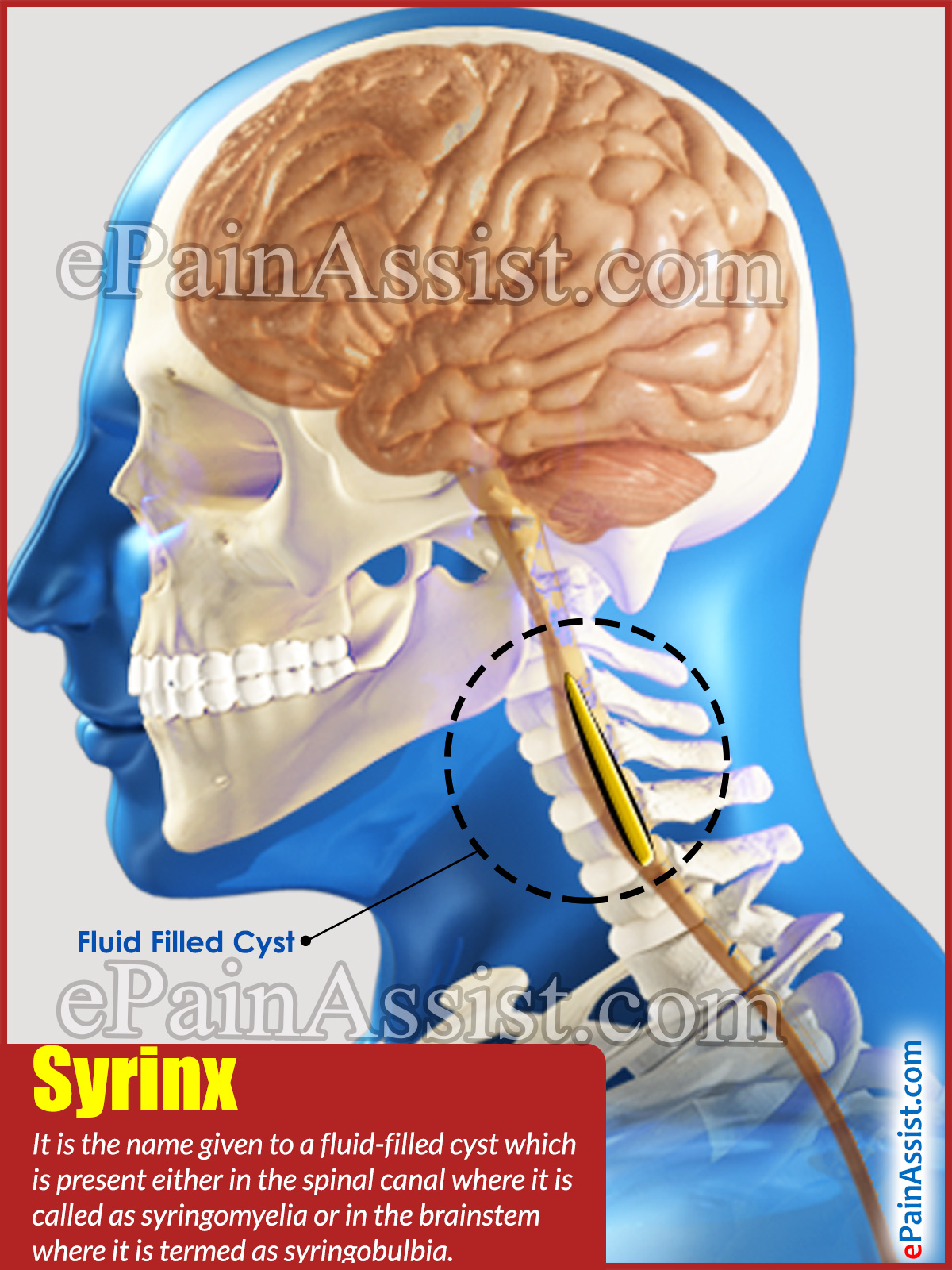What is a Syrinx?
Syrinx is the name given to a fluid-filled cyst which is present either in the spinal canal where it is called as syringomyelia or in the brainstem where it is termed as syringobulbia. The main reasons for developing Syrinx or development of these fluid filled cysts are abnormalities of the craniocervical junction like Arnold Chiari malformation, any trauma to the spinal cord, tumor of the spinal cord. Presenting feature of this condition is weakness of the upper extremities and loss of sensation over the neck and back to temperature. This abnormality is normally diagnosed by radiological studies in the form of an MRI and normally the preferred route of treatment is surgery to restore normal CSF flow which gets affected by Syrinx.

What Causes Syrinx?
The root cause for the formation of Syrinx is any obstruction, which impairs the flow of the cerebrospinal fluid. This may be a lesion or a tumor or any malformation of the brain or spinal cord. Majority of the cases of Syrinx is due to congenital deformity of the brain in which the brain is extremely small and misshapen such that the cerebellum enters into the spinal cord called as Arnold-Chiari. Some cases can also occur due to deformities or trauma of the spinal cord. Spinal cord tumor constitutes to about 40% cases of Syrinx.
What are the Symptoms Associated with Syrinx?
The symptoms of Syrinx begin usually when the affected individual enters the fourth decade of his or her life.
Syrinx of the spinal cord causes sensory loss for pain and temperature, which may be mild at the beginning but worsens overtime. The classic example of this being a bruise or cut in which there is no pain felt. The patient also develops weakness of the extremities along with atrophy and reduced reflexes due to Syrinx. The deficits mentioned above are normally asymmetric meaning it will be more on one part of the body then the other.
Syrinx of the brainstem causes symptoms like vertigo, nystagmus, loss of facial sensation, lingual weakness, difficulty with speech, difficulty swallowing, and hoarseness of voice.
How is Syrinx Diagnosed?
The best way to diagnose Syrinx is through radiologic studies in the form of MRI and CT scans. The presenting features of neurologic symptomatology point to the presence of a Syrinx, which may prompt the physician to go for an MRI of the brain and spinal cord to confirm the diagnosis.
How is Syrinx Treated?
The most preferred way to treat Syrinx is by doing a surgery and restoring normal flow of the CSF. This is especially true if the Syrinx is caused by deformities like Arnold-Chiari malformations and the like. The surgery done is called posterior fossa decompression. The surgery performed may relieve the symptoms and prevent further progression of the condition, but whatever damage that has already been inflicted on the nerves due to the Syrinx cannot be reversed.
